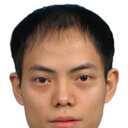Cruciferous vegetables, the GSTP1 Ile105Val genetic polymorphism, and breast cancer risk.
Từ khóa
trừu tượng
BACKGROUND
Cruciferous vegetables are the primary source of isothiocyanates and other glucosinolate derivatives that are known to induce phase II detoxifying enzymes, including glutathione S-transferases (GSTs).
OBJECTIVE
We investigated the independent and combined effects of cruciferous vegetable intake and the GSTP1 Ile(105)Val genetic polymorphism on breast cancer risk.
METHODS
Analyses included 3035 cases and 3037 population controls who were participating in the Shanghai Breast Cancer Study and for whom diet and genetic data were complete (87% of cases and 85% of controls).
RESULTS
With the use of multivariate logistic regression, the GSTP1 Val/Val genotype was significantly associated with greater breast cancer risk (OR = 1.50; 95% CI: 1.12, 1.99). The association was significantly greater in premenopausal women (OR = 1.69; 95% CI: 1.17, 2.43) than in postmenopausal women (OR = 1.20; 95% CI: 0.74, 1.92). Total cruciferous vegetable intake was not significantly associated with breast cancer risk, although subjects reporting greater turnip (P for trend < 0.001) and Chinese cabbage (P for trend = 0.049) intakes had a significantly lower postmenopausal breast cancer risk. Women with the GSTP1 Val/Val genotype and low cruciferous vegetable intake had a breast cancer risk 1.74-fold (95% CI: 1.13, 2.67) that of women with the Ile/Ile or Ile/Val genotype. This effect of low cruciferous vegetable intake and the Val/Val genotype was seen predominantly among premenopausal women (OR = 2.08; 95% CI = 1.20, 3.59).
CONCLUSIONS
Cruciferous vegetable intake consistent with high isothiocyanate exposure may reduce breast cancer risk. Cruciferous vegetable intake also may ameliorate the effects of the GSTP1 genotype.



